Middle East And Africa E-commerce Market Size
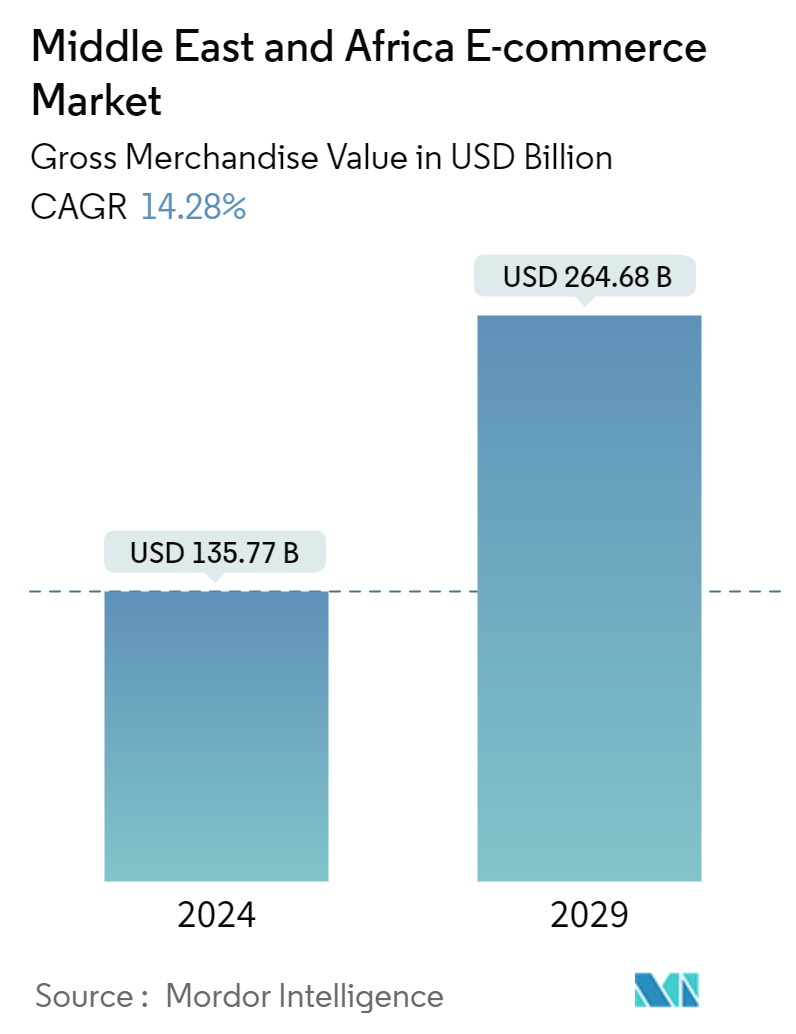
| Study Period | 2019 - 2029 |
| Base Year For Estimation | 2023 |
| Market Size (2024) | USD 135.77 Billion |
| Market Size (2029) | USD 264.68 Billion |
| CAGR (2024 - 2029) | 14.28 % |
| Market Concentration | Medium |
Major Players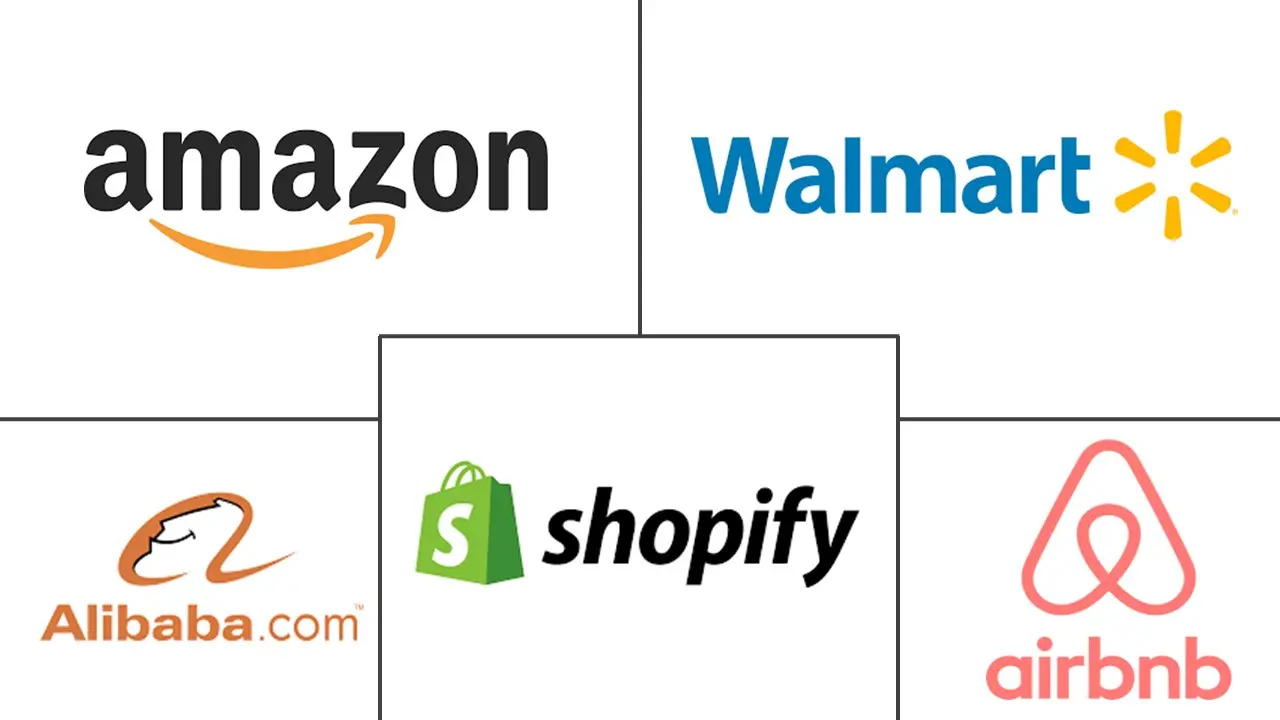
*Disclaimer: Major Players sorted in no particular order |
Middle East And Africa E-commerce Market Analysis
The Middle East And Africa E-commerce Market size in terms of gross merchandise value is expected to grow from USD 135.77 billion in 2024 to USD 264.68 billion by 2029, at a CAGR of 14.28% during the forecast period (2024-2029).
- High internet penetration, urbanization, and a surge in mobile shopping are key drivers propelling the e-commerce market in this region. The adoption of e-commerce automation offers substantial growth avenues for market players.
- With one of the world’s youngest populations, the Middle East is witnessing a rapid rise in smartphone usage. Consequently, numerous e-commerce platforms have pivoted to mobile apps to enhance and sustain user interaction.
- The growing integration of e-commerce platforms with AI, predictive analytics, and cloud computing boosts market growth. In addition, the number of foreign enterprises in the region is increasing.
- In the Middle East's e-commerce landscape, personalization and customer experience are pivotal. Retailers are leveraging data analytics and customer segmentation to offer tailored shopping experiences, personalized product suggestions, and targeted promotions. By prioritizing personalization, the goal is to enhance satisfaction, foster loyalty, and boost repeat purchases.
- Owing to the COVID-19 pandemic and the adoption of social distancing, a significant segment of the regional population shifted from traditional brick-and-mortar stores to online platforms. These retailers are at the forefront, offering a seamless shopping experience.
- Traditional brick-and-mortar outlets contend fiercely with their online counterparts, prompting a notable shift in how consumers shop. To stay relevant, retailers are swiftly bolstering their digital footprints, embracing omnichannel strategies, and harnessing technology to elevate the overall customer experience.
Middle East And Africa E-commerce Market Trends
The Adoption of Latest Technology is Increasing
- The expanding array of digital channels is paralleled by a rising user base. A survey by Standard Chartered showed that around 50% of consumers in the region favored online transactions over traditional card or cash payments, marking a notable shift in consumer behavior.
- Rising ICT adoption is a catalyst for financial inclusion, with heightened participation from the financial sector being crucial for the growth of e-commerce. The swift expansion is undeniably bolstered by the widespread adoption of advanced mobile phones and improved internet accessibility.
- Technological advancements significantly influence the market. A prominent trend is the growing adoption of artificial intelligence (AI) and machine learning (ML) to tailor the shopping experience, enhance product suggestions, and elevate customer service. Furthermore, the surge of social commerce, influencer marketing, and virtual reality (VR) shopping is reshaping consumer interactions with online platforms.
- These technologies not only provide a more personalized and engaging shopping experience but also help businesses understand consumer behavior better, optimize their operations, and stay competitive in a rapidly evolving market. As a result, companies that leverage these advancements are likely to see significant growth and improved customer loyalty.
- A growing cohort of African SMEs is actively establishing their digital footprint, developing websites, and securing email addresses. This strategic shift is geared toward strengthening their e-commerce ventures and amplifying their export potential. Although B2B e-commerce in Africa initially trailed its retail segment, forecasts indicate a reversal, with B2B set to surpass B2C growth, potentially doubling by 2030. A significant driver of this surge is the rising prevalence of digital payment methods.
- Sustainability and eco-consciousness are on the rise. Consumers are increasingly becoming aware of the environmental repercussions of their purchases. In response, e-commerce platforms are championing eco-initiatives, including eco-packaging, carbon offsets, and featuring products from ethical, sustainable brands. This mirrors the global move toward conscientious consumption, opening doors for e-commerce retailers to align with the changing values of Middle Eastern buyers.
- A survey conducted by logistics firm UPS showed that despite two-thirds of Middle Eastern customers anticipating digital service accessibility, around 67% of the region's SMEs did not provide any online sales. Similarly, Gartner's findings highlighted that only 15% of businesses in the region maintain an online footprint.
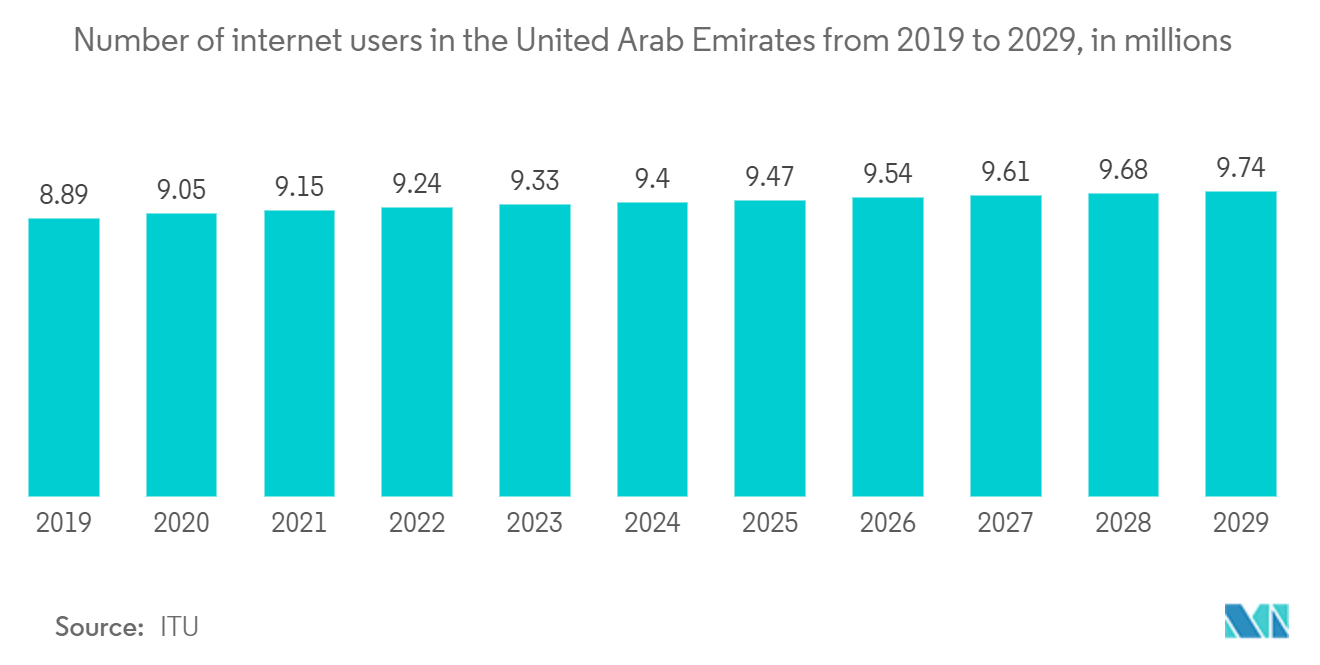
The Usage of Smartphones is Increasing
- The increasing significance of smartphones in digital commerce is driven by robust connectivity, rising smartphone ownership, and increasing affluence, particularly in the Gulf. In South Africa, the adoption of budget-friendly smartphones and feature phones with smart capabilities shifted consumer behavior from PCs to mobile devices for digital transactions.
- Key drivers of this shift encompass mobile retailing, banking, social media engagement, and promotions delivered through mobile devices. Enabled by partnerships with major digital wallet providers and a diverse array of local retailers, consumers can make payments directly from their phones. The trend of proximity payments, initially aimed at financial inclusion in rural Africa, is poised to gain momentum, evolving into a symbol of convenience in the Gulf.
- Android smartphones have recently made significant strides in integrating artificial intelligence and virtual assistant software, such as Google Assistant, which enables users to issue voice commands, rivaling Apple's Siri in iPhones. With these advancements, Android is steadily evolving, integrating new elements in its successive versions to enhance its products.
- In the Middle East, the e-commerce landscape boasts a broad spectrum of product categories. Notably, fashion and beauty segments experienced remarkable growth, propelled by the region's fashion-forward populace. This surge led to the rise of online marketplaces and specialized fashion platforms, meeting the escalating demand for stylish apparel, accessories, and beauty products.
- Moreover, the electronics and home appliances domain commands a substantial market share, buoyed by the region's high smartphone penetration and tech-savvy consumers. Concurrently, there has been a notable uptick in the demand for groceries, health and wellness items, and online food delivery services, further boosting the e-commerce market.
- Heightened competition in the region is driving product innovations as players vie to introduce cutting-edge features and dominate the market. Several regional states are ramping up investments to broaden their commercial 5G network coverage. In preparation for commercial rollouts, both Etisalat and Ooredoo are actively conducting live 5G trials, focusing on speed, equipment, latency, and beam steering for enhanced signal reach.
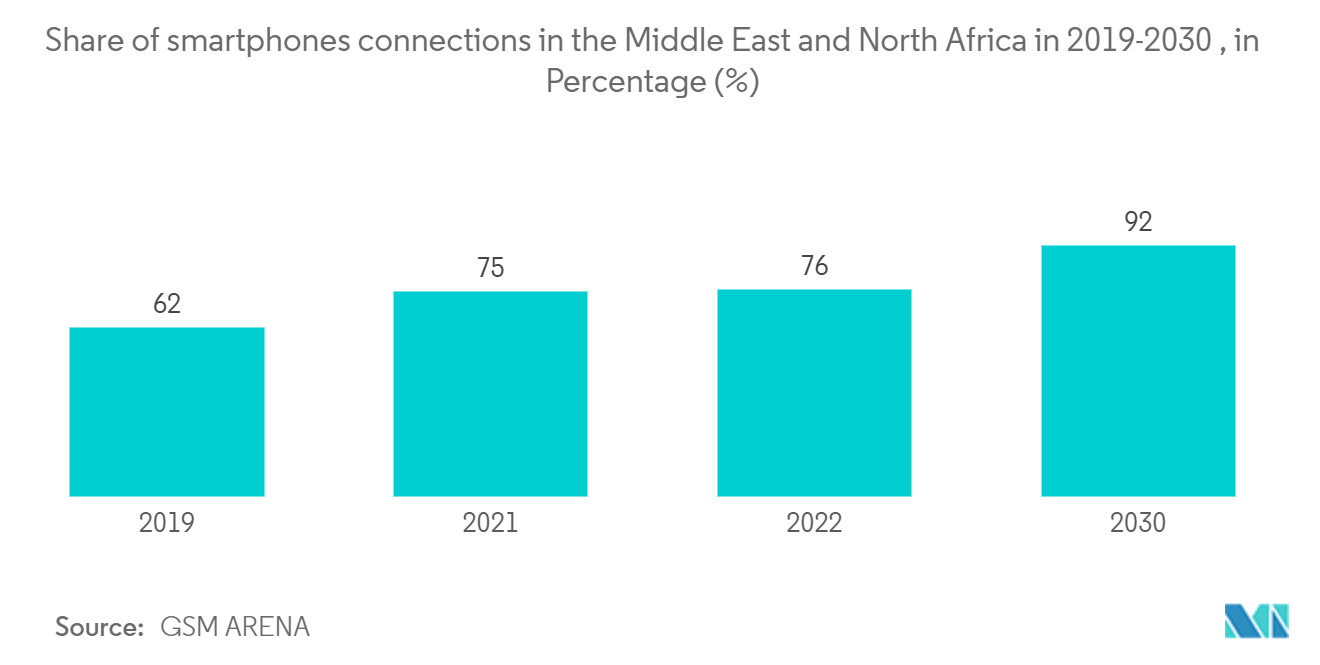
Middle East And Africa E-commerce Industry Overview
Many competitors are present in the e-commerce market in Middle East and Africa, leading to high competition. Many local and global firms have expanded, resulting in fierce competition. Key market players include Amazon.com Inc., Alibaba Group Holding Limited, Walmart Inc., Airbnb Inc., and Shopify Inc. Product launches, high expenses on research and development, partnerships, and acquisitions, among others, are the prime growth strategies these companies adopt to sustain the intense competition.
- January 2024: TijaraHub unveiled its latest e-commerce platform, designed to aid small and medium-sized manufacturers in Egypt and Turkey. The platform's goal is to help these manufacturers extend their product reach to global markets. This initiative not only facilitates market expansion but also fosters sustainable growth. Additionally, the platform empowers buyers by offering a diverse range of options and seamless transactions with approved suppliers.
- August 2023: Arabian Business Machines (ABM), an authorized distributor of Toshiba in Saudi Arabia, launched its long-awaited e-commerce platform. This move was designed to enhance customer accessibility, offering a more convenient way to purchase authentic Toshiba Toners. The initiative targets professionals and businesses, ensuring they can elevate their print quality with ease.
Middle East And Africa E-commerce Market Leaders
-
Amazon.com Inc.
-
Alibaba Group Holding Limited
-
Shopify Inc.
-
Costco Wholesale Corporation
-
Best Buy Co. Inc.
*Disclaimer: Major Players sorted in no particular order
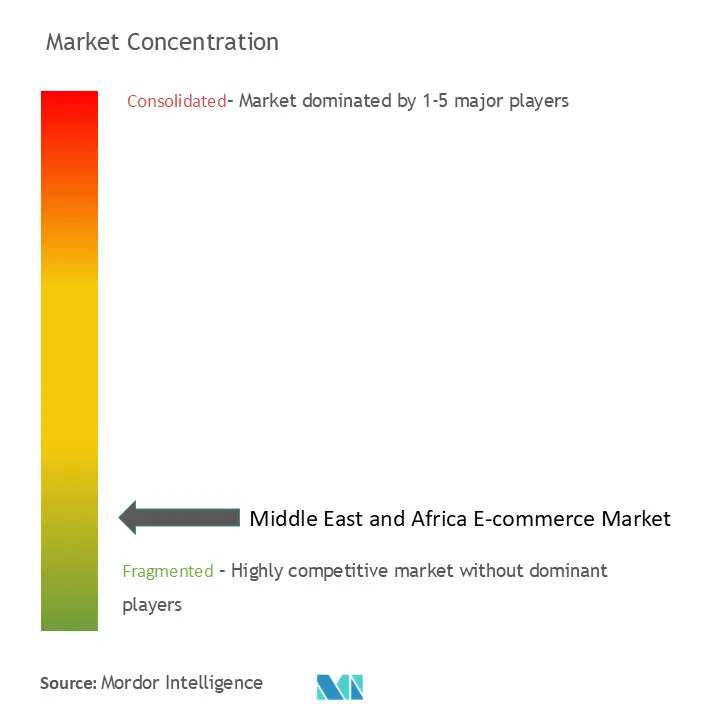
Middle East And Africa E-commerce Market News
- June 2024: Kuehne+Nagel initiated the construction of a new fulfillment and distribution center in EZDubai, a prominent e-commerce hub within Dubai South. The chosen location is adjacent to Al Maktoum International Airport and linked to Jebel Ali Port via a bonded logistics corridor.
- October 2023: Calibrate Commerce, a Dubai-based e-commerce expert, unveiled Calibrate Labs, an incubator tailored for homegrown e-commerce enterprises in MENA. The initiative targets start-ups aiming to develop their own ideas or scale their existing ventures.
MEA E-Commerce Market Report - Table of Contents
1. INTRODUCTION
- 1.1 Study Assumptions and Market Definitions
- 1.2 Scope of the Study
2. RESEARCH METHODOLOGY
3. EXECUTIVE SUMMARY
4. MARKET INSIGHTS
- 4.1 Market Overview
-
4.2 Industry Attractiveness- Porter's Five Forces Analysis
- 4.2.1 Bargaining Power of Suppliers
- 4.2.2 Bargaining Power of Buyers/Consumers
- 4.2.3 Threat of New Entrants
- 4.2.4 Threat of Substitute Products
- 4.2.5 Intensity of Competitive Rivalry
- 4.3 Key market trends and share of e-commerce of total Retail sector
- 4.4 Impact of COVID-19 on the e-commerce sales
5. MARKET DYNAMICS
-
5.1 Market Drivers
- 5.1.1 Increase in the Adoption of Latest Technology
- 5.1.2 Increasing Consumer Interest towards Convenient Shopping solutions
-
5.2 Market Challenges
- 5.2.1 Low Internet Penetration
- 5.2.2 Increasing Security and Privacy Concerns
6. Market Segmentation
-
6.1 By B2C ecommerce
- 6.1.1 Market size (GMV) for the period of 2019-2029
- 6.1.2 Market Segmentation - by Application
- 6.1.2.1 Beauty & Personal Care
- 6.1.2.2 Consumer Electronics
- 6.1.2.3 Fashion & Apparel
- 6.1.2.4 Food & Beverage
- 6.1.2.5 Furniture & Home
- 6.1.2.6 Others (Toys, DIY, Media, etc.)
-
6.2 By B2B ecommerce
- 6.2.1 Market size for the period of 2019-2029
-
6.3 Geography
- 6.3.1 United Arab Emirates
- 6.3.2 Saudi Arabia
- 6.3.3 South Africa
- 6.3.4 Rest of Middle-East and Africa
7. Competitive Landscape
-
7.1 Company Profiles
- 7.1.1 Amazon.com Inc.
- 7.1.2 Alibaba Group Holding Limited
- 7.1.3 Airbnb, Inc.
- 7.1.4 Walmart Inc.
- 7.1.5 Inter Ikea Systems BV
- 7.1.6 Costco Wholesale Corporation
- 7.1.7 Shopify Inc.
- 7.1.8 Best Buy Co. Inc.
- 7.1.9 eBay Inc.
- 7.1.10 AliExpress
- *List Not Exhaustive
8. Investment Analysis
9. Future Outlook of the Market
** Subject To AvailablityMiddle East And Africa E-commerce Industry Segmentation
E-commerce refers to the digital sale of goods and services, spanning various models, including B2C (business-to-consumer) and B2B (business-to-business). These platforms bring benefits like lower inventory costs, increased profits, varied discounts, and streamlined delivery services.
The e-commerce market in Middle East and Africa is segmented by B2C e-commerce (beauty and personal care, consumer electronics, fashion and apparel, food and beverage, furniture and home, and others), B2B e-commerce, and country (the United Arab Emirates, Saudi Arabia, South Africa, and Rest of Middle East and Africa). The market sizes and forecasts are provided in terms of value (USD) for all the above segments.
| By B2C ecommerce | Market size (GMV) for the period of 2019-2029 | |
| Market Segmentation - by Application | Beauty & Personal Care | |
| Consumer Electronics | ||
| Fashion & Apparel | ||
| Food & Beverage | ||
| Furniture & Home | ||
| Others (Toys, DIY, Media, etc.) | ||
| By B2B ecommerce | Market size for the period of 2019-2029 | |
| Geography | United Arab Emirates | |
| Saudi Arabia | ||
| South Africa | ||
| Rest of Middle-East and Africa |
MEA E-Commerce Market Research FAQs
How big is the Middle East And Africa E-commerce Market?
The Middle East And Africa E-commerce Market size is expected to reach USD 135.77 billion in 2024 and grow at a CAGR of 14.28% to reach USD 264.68 billion by 2029.
What is the current Middle East And Africa E-commerce Market size?
In 2024, the Middle East And Africa E-commerce Market size is expected to reach USD 135.77 billion.
Who are the key players in Middle East And Africa E-commerce Market?
Amazon.com Inc., Alibaba Group Holding Limited, Shopify Inc., Costco Wholesale Corporation and Best Buy Co. Inc. are the major companies operating in the Middle East And Africa E-commerce Market.
What years does this Middle East And Africa E-commerce Market cover, and what was the market size in 2023?
In 2023, the Middle East And Africa E-commerce Market size was estimated at USD 116.38 billion. The report covers the Middle East And Africa E-commerce Market historical market size for years: 2019, 2020, 2021, 2022 and 2023. The report also forecasts the Middle East And Africa E-commerce Market size for years: 2024, 2025, 2026, 2027, 2028 and 2029.
What are the key challenges faced by the E-Commerce Market in MEA?
Major challenges faced by the MEA E Commerce Market are a) Logistical inefficiencies b) Diverse payment preferences c) Regulatory issues are discussed in detail in the report
What are the key challenges faced by the E-Commerce Market in MEA?
Major challenges faced by the MEA E Commerce Market are a) Logistical inefficiencies b) Diverse payment preferences c) Regulatory issues are discussed in detail in the report
MEA Ecommerce Industry Report
The Middle East and Africa E-commerce market is experiencing substantial growth driven by digital transformation and evolving consumer behaviors. This market is segmented into various categories, including retail shopping, travel and hospitality, online food service, media and entertainment, healthcare and wellness, and technology products and services. The increased usage of mobile devices and internet penetration is enhancing access to online platforms, promoting mobile-centric shopping experiences.
Advanced technologies like AI and predictive analytics are being integrated into the market, further boosting its growth. The strategic expansion of local and international companies in the region also supports this growth. The industry statistics indicate a significant rise in market size, reflecting the growing consumer base and demand for e-commerce services.
The industry analysis shows that the market is benefiting from a robust industry outlook, with industry trends pointing towards continued growth. The industry research highlights that the market is segmented into B2C and B2B e-commerce, covering various sectors such as beauty and personal care, consumer electronics, fashion and apparel, food and beverage, furniture and home, among others.
The market data reveals that countries like the United Arab Emirates, Saudi Arabia, and South Africa are key players in this region. The market forecast suggests a positive growth rate, with market predictions indicating sustained market growth over the coming years. The market overview provides insights into market segmentation, market value, and market leaders who are driving this growth.
The industry reports and industry information from Mordor Intelligence™ offer a comprehensive market review, including detailed analysis reports and report examples. These reports also provide valuable market outlooks and market reviews, essential for understanding the market dynamics and making informed business decisions.
For more detailed statistics and insights, the report pdf from Mordor Intelligence™ is available, offering an in-depth analysis of the market trends, industry size, industry sales, and industry worth. This report is crucial for research companies and businesses looking to capitalize on the expanding e-commerce market in the Middle East and Africa.



